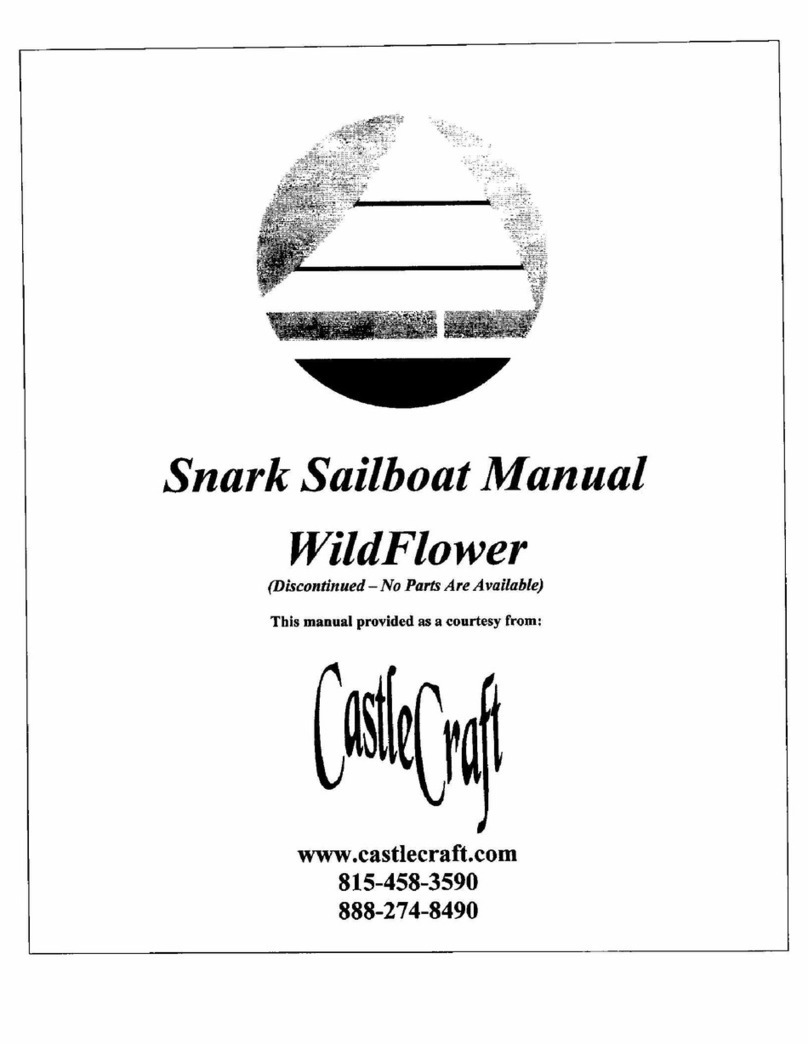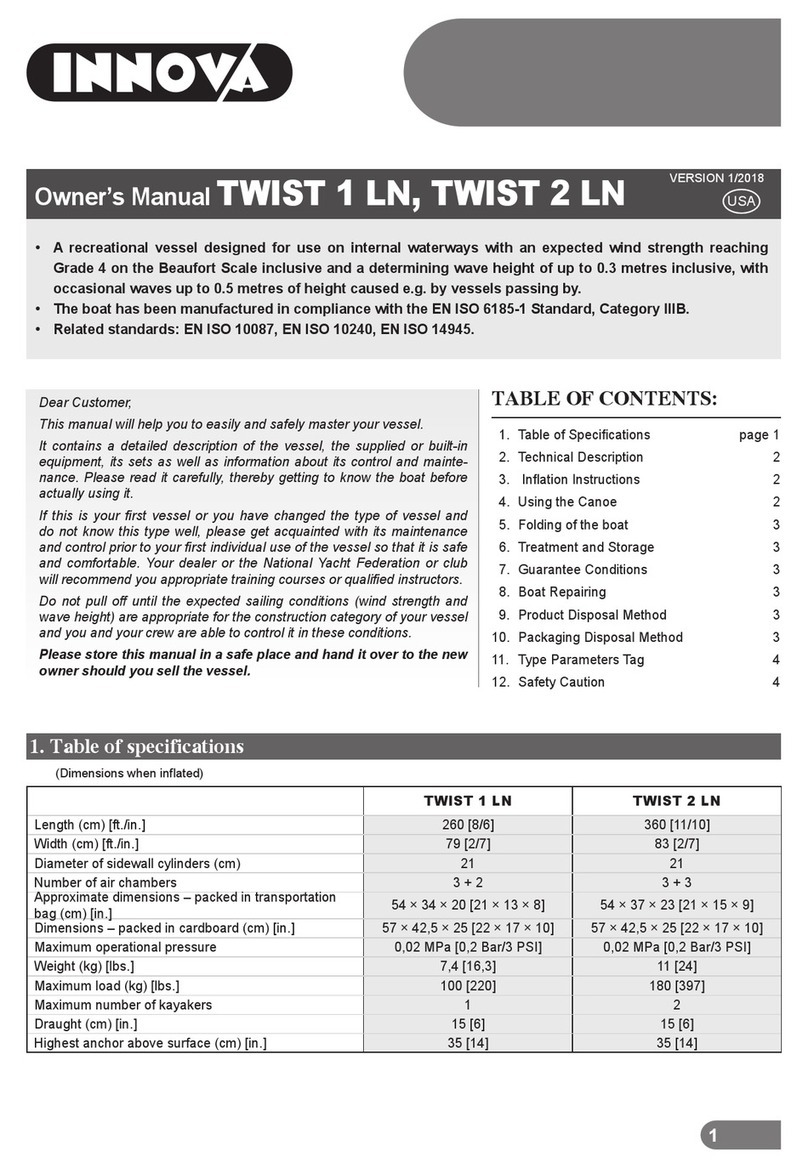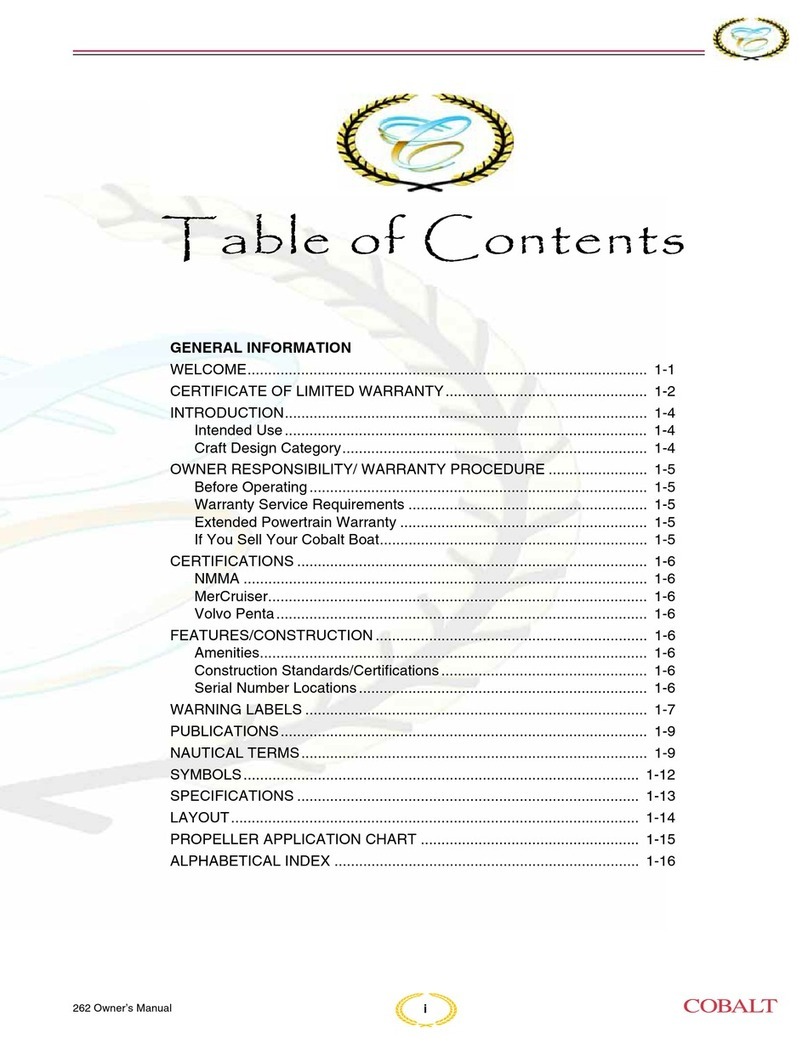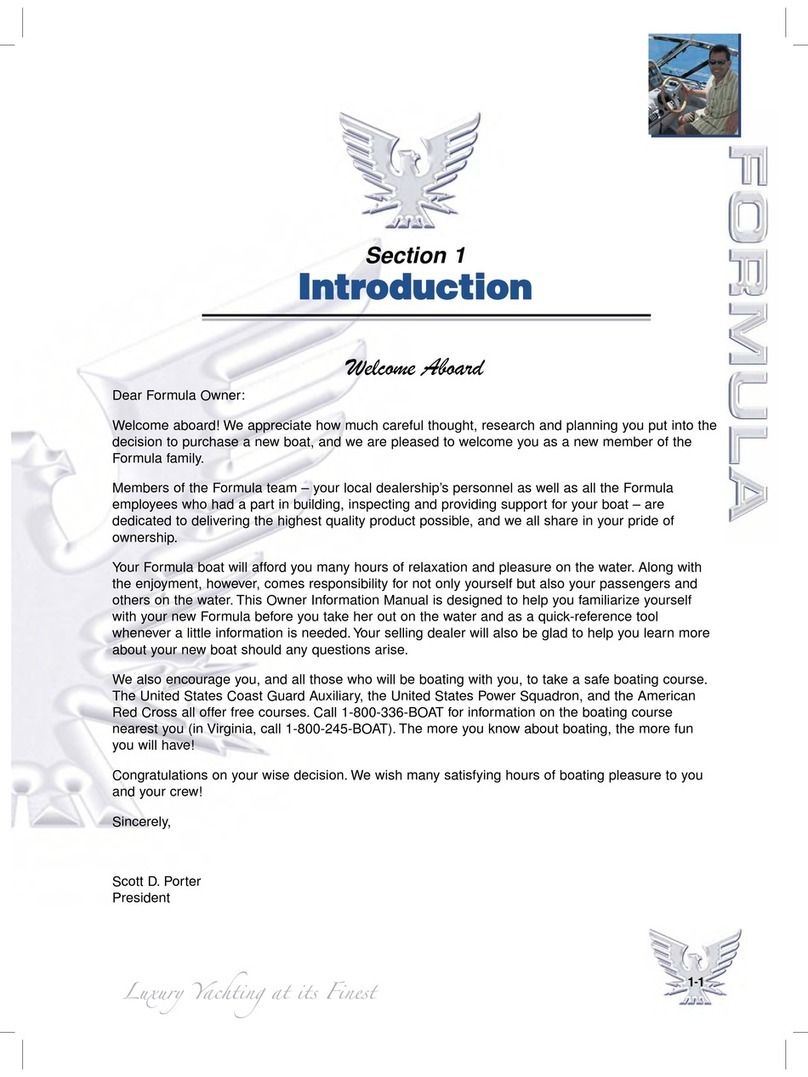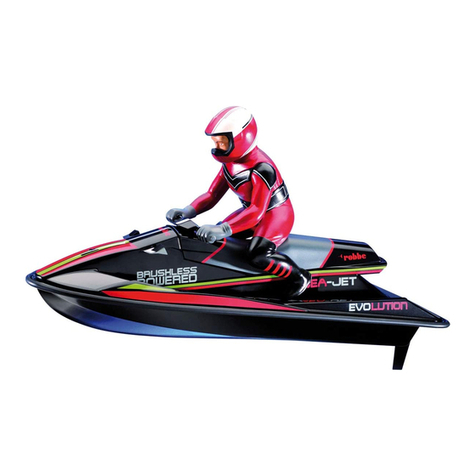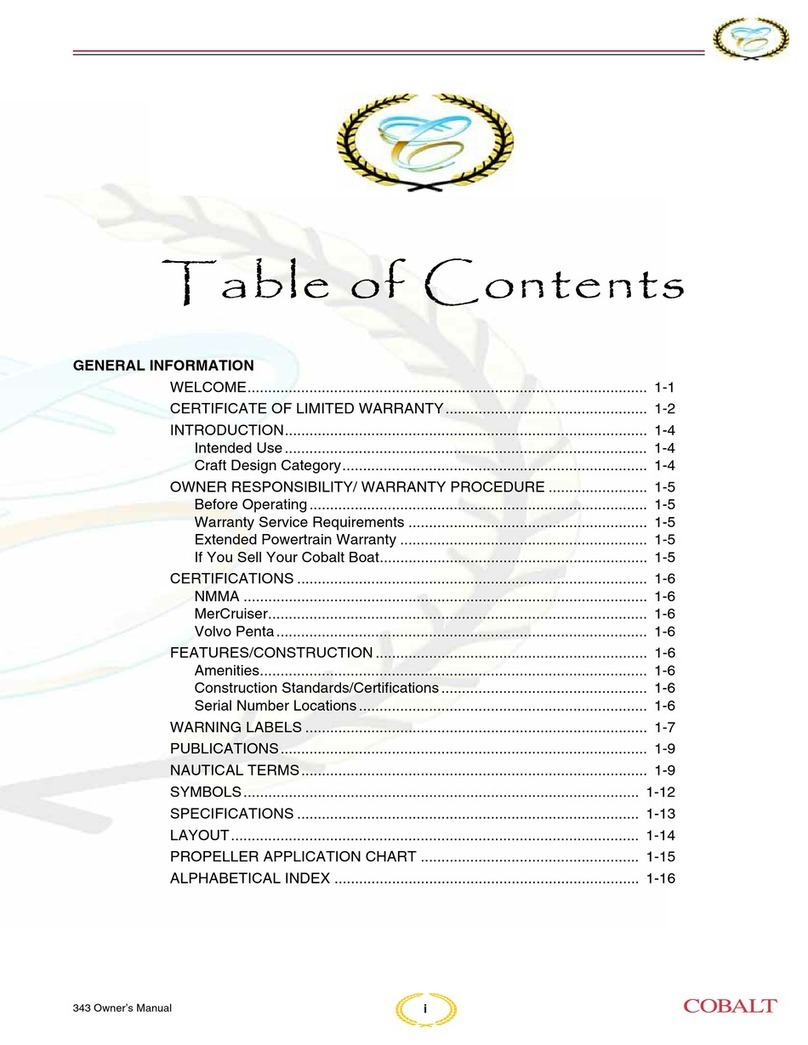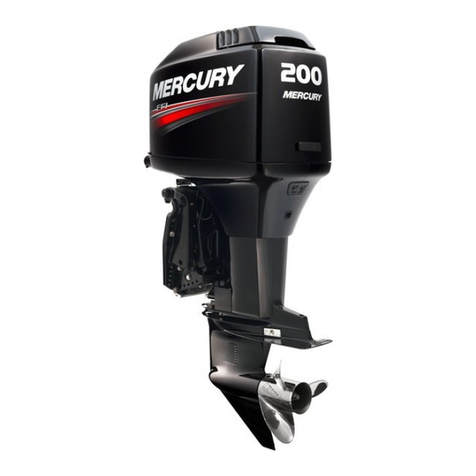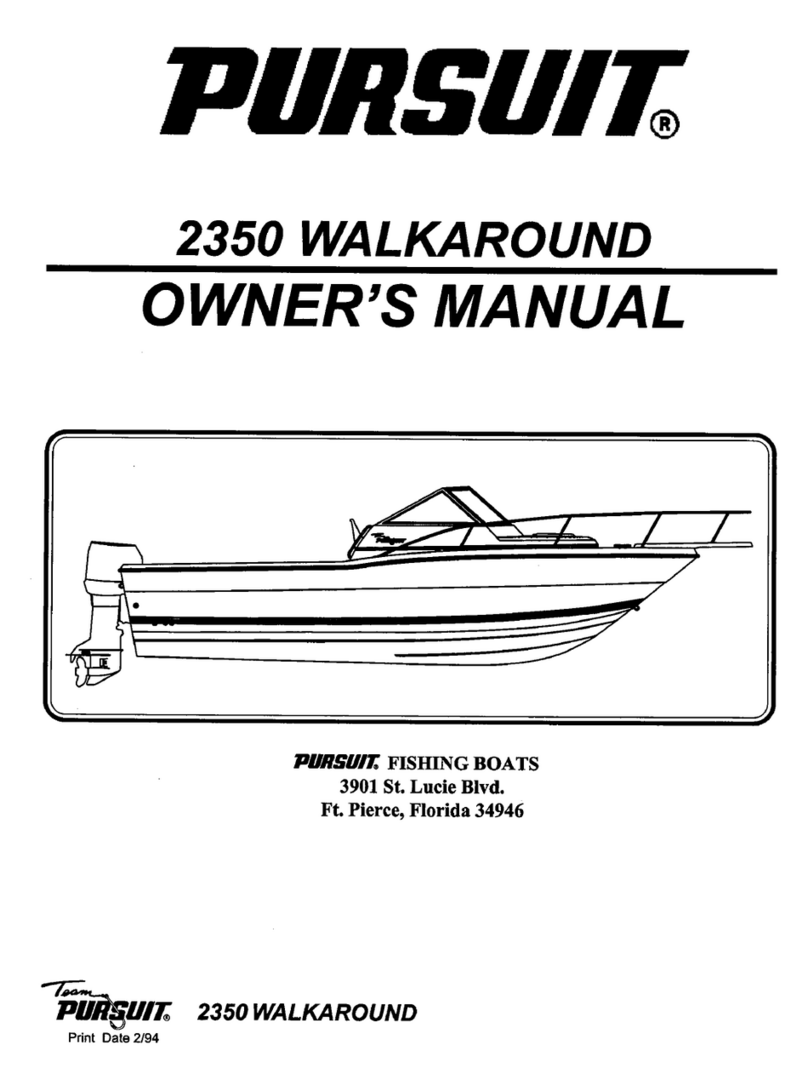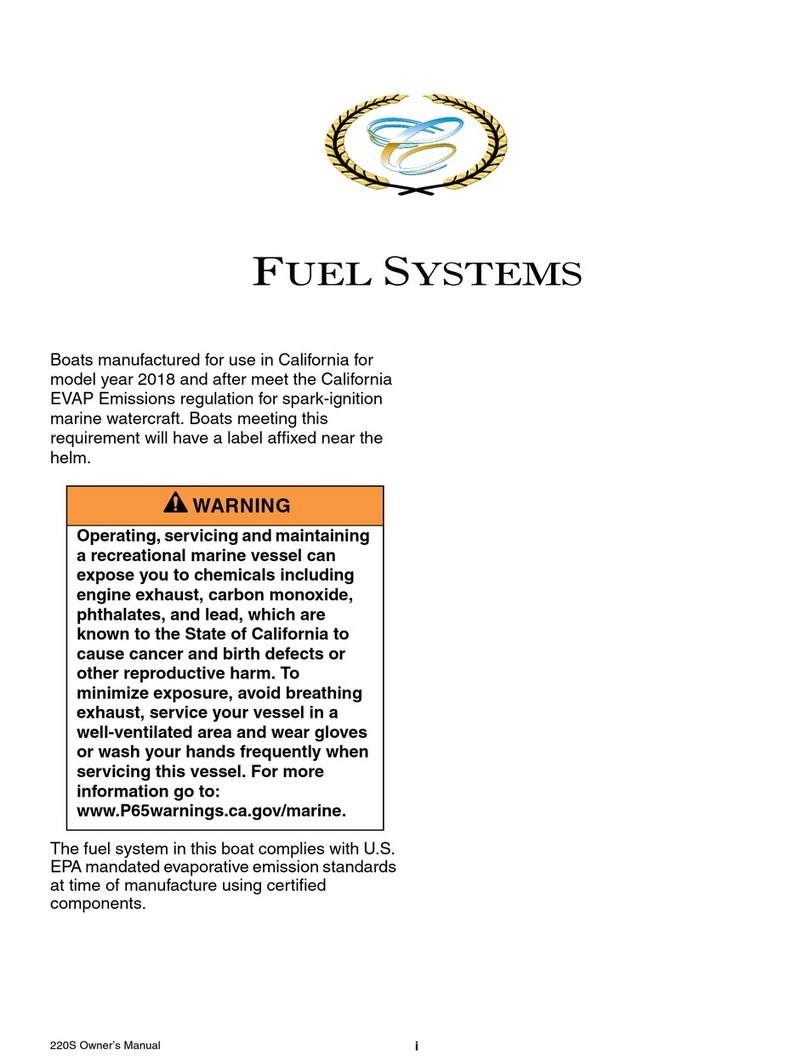Seawind 1600 User manual

1600
OWNERS
MANUAL
For the safe operation, handling and maintenance of the Seawind 1600
2021 Edition

P a g e | 1
INTRODUCTION
Dear Seawind Owner,
You have just received delivery of your new Seawind 1600. We would like to thank you for
showing confidence in our product by choosing to cruise with Seawind. We are sure you will
enjoy your boat for many years to come.
The Seawind family is made to last. Your new Seawind 1600 is the ultimate performance
cruising catamaran, but for your boat to perform reliably, it is of utmost importance that a
careful maintenance program is followed. This will benefit you in the form of safety, as well as
protecting your investment and other waterway users.
Seawind’s commitment to you doesn’t stop upon handover. We are interested in seeing your
photo’s and hearing about your experiences so we can share with others in the Seawind
cruising community. The quest for a perfect boat is a continuous process. From time to time as
we discover or develop superior upgrades we will keep you informed. We are also committed
to supporting you if you have any troubles with your vessel. Your Seawind dealer is at your
disposal to give you help and sound advice for all aspects of maintenance. Nevertheless, you
are the “captain of your ship”. The sea must never be underestimated. It must be taken
seriously at all times.
You and only you, are responsible for checking and regularly maintaining the condition of your
boat, including all of its equipment and by always practicing the rules of good seamanship.
This handbook is provided as a guide. While it does not cover every item, it will go a long way
toward making ownership of your new Seawind 1600 an exciting and pleasurable experience.
Many years of happy sailing!
Seawind Catamarans.

P a g e | 2
This manual has been compiled to help you to operate your craft with safety and pleasure. It
contains details of the craft; the equipment supplied or fitted, its systems and information on their
operation. Please read it carefully, and familiarize yourself with the craft before using it.
This owner's manual is not a course on boating safety or seamanship. If this is your first craft, or if
you are changing to a type of craft you are not familiar with, for your own comfort and safety,
please ensure that you obtain handling and operating experience before “assuming command” of
the craft. Your dealer or national sailing federation or yacht club will be pleased to advise you of
local sea schools, or competent instructors.
Ensure that the anticipated wind and sea conditions will correspond to the design category of your
craft, and that you and your crew are able to handle the craft in these conditions.
Even when your boat is categorized for them, the sea and wind conditions corresponding to the
design categories A, B and C range from severe storm conditions for category A, to strong
conditions for the top of category C, open to the hazards of a freak wave or gust. These are
therefore dangerous conditions, where only a competent, fit and trained crew using a well
maintained craft can satisfactorily operate.
This owner's manual is not a detailed maintenance or trouble-shooting guide. In the case of
difficulty, refer to the boat builder or his representative. If a maintenance manual is provided, use it
for the craft's maintenance. You will find a box filled with warranty cards and manuals for the
equipment installed aboard your 1600. Be sure to review the warranty information provided and
register for any extended warranty available.
Always use trained and competent people for maintenance, fixing or modifications. Modifications
that may affect the safety characteristics of the craft shall be assessed, executed and documented
by competent people. The boat builder cannot be held responsible for modifications that he has
not approved.
In some countries, a driving license or authorization is required, or specific regulations are in force.
Any craft, no matter how strong it may be, can be severely damaged if not used properly. This is
not compatible with safe boating. Always adjust the speed and direction of the craft to sea
conditions.
If your craft is fitted with a life raft, carefully read its operating manual. The craft should have
onboard the appropriate safety equipment (lifejackets, harness, etc.) according to the type of craft,
weather conditions, etc. This equipment is mandatory in some countries. The crew should be
familiar with the use of all safety equipment and emergency maneuvering (man overboard
recovery, towing, etc.); sailing schools and clubs regularly organize drill sessions.
All persons should wear a suitable buoyancy aid (life jacket/personal floatation device) when on
deck. Note that, in some countries, it is a legal requirement to wear a buoyancy aid that complies
with their national regulations at all times.
Please keep this manual in a secure place and hand it over to the new owner when you sell the
vessel.

P a g e | 3
Contents
INTRODUCTION......................................................................................................................................... 1
Contents.................................................................................................................................................... 3
SECTION 1 –QUICK START GUIDE............................................................................................................. 6
1.1 HOUSE POWER....................................................................................................................... 6
1.2 ENGINES ................................................................................................................................. 7
SECTION 2 –GENERAL DETAILS ................................................................................................................ 8
2.1 DESIGN CATEGORY................................................................................................................. 8
2.2 STABILITY................................................................................................................................ 8
2.3 SPECIFICATION AND OPTIONS INSTALLED............................................................................. 8
2.4 GENERAL LAYOUT ................................................................................................................ 10
2.5 GENERAL ARRANGEMENT (3 CABIN) ................................................................................... 11
2.6 PROFILE LAYOUT .................................................................................................................. 12
SECTION 3 –SAILING AND CONTROL OF YOUR VESSEL.......................................................................... 13
3.1 SAILING IN GENERAL............................................................................................................ 13
3.2 LOADING .............................................................................................................................. 13
3.3 CHECKLIST PRIOR TO MAKING WAY .................................................................................... 13
3.4 CHECKLIST WHEN LEAVING VESSEL ..................................................................................... 13
3.5 MOORING............................................................................................................................. 14
3.6 ANCHORING ......................................................................................................................... 17
3.7 ANCHOR BRIDLE................................................................................................................... 18
3.8 HELM STATIONS - INSTRUMENTS ........................................................................................ 19
3.9 RUDDERS.............................................................................................................................. 20
3.10 DAGGERBOARDS.................................................................................................................. 22
3.11 ENGINES ............................................................................................................................... 23
3.12 GORI PROPELLERS ................................................................................................................ 26
3.13 WINCHES.............................................................................................................................. 27
SECTION 4 –SAIL CONTROLS –SETTING SAILS....................................................................................... 28
4.1 REEFING................................................................................................................................ 28
4.2 SAIL CONTROLS - MAIN....................................................................................................... 31
4.3 SAIL CONTROLS - JIB............................................................................................................ 32
4.4 SAIL CONTROLS - SCREACHER ............................................................................................. 32
4.5 SAIL CONTROLS - SPINNAKER............................................................................................... 32

P a g e | 4
4.6 MANOERVERS ...................................................................................................................... 33
SECTION 5 –ONBOARD SYSTEMS OPERTION......................................................................................... 34
5.1 NAV STATION ....................................................................................................................... 34
5.2 NAVIGATION ........................................................................................................................ 34
5.3 SANITATION ......................................................................................................................... 37
5.4 GALLEY AND COOKING......................................................................................................... 38
5.5 GAS SYSTEMS ....................................................................................................................... 38
5.6 COCKPIT AND DECKS............................................................................................................ 39
5.7 AIRCONDITINOING............................................................................................................... 40
5.8 BILGE .................................................................................................................................... 40
5.9 ELECTRICAL –POWER SOURCES AND DISTRIBUTION.......................................................... 42
5.10 ELECTRICAL –220V AC......................................................................................................... 44
5.11 ENTERTAINMENT SYSTEM ................................................................................................... 51
5.12 FRESH WATER ...................................................................................................................... 51
5.13 HOT WATER SYSTEM............................................................................................................ 53
5.14 DAVITS AND DINGHY............................................................................................................ 53
SECTION 6 –CARE, SERVICING AND MAINTENANCE.............................................................................. 54
6.1 GENERAL CARE..................................................................................................................... 54
6.2 EXTERIOR GELCOAT............................................................................................................. 54
6.3 BOTTOM HULLS.................................................................................................................... 54
6.4 EXTERIOR HARDWARE ......................................................................................................... 55
6.5 STAINLESS STEEL .................................................................................................................. 55
6.6 SOLAR PANELS...................................................................................................................... 55
6.7 FLEXITEEK ............................................................................................................................. 55
6.8 INTERIOR .............................................................................................................................. 56
6.9 SAILS..................................................................................................................................... 57
6.10 RIGGING ............................................................................................................................... 58
6.11 SHEETS & HALYARDS............................................................................................................ 60
6.12 GAS....................................................................................................................................... 61
6.13 ENGINES AND PROPULSION................................................................................................. 61
6.14 SANITATION ......................................................................................................................... 64
6.15 PLUMBING............................................................................................................................ 64
6.16 ELECTRICAL........................................................................................................................... 64

P a g e | 5
6.17 LIFTING AND SETTING ON HARD.......................................................................................... 64
6.18 BEACHING ............................................................................................................................ 66
6.19 WINTERISING ....................................................................................................................... 66
SECTION 7 –SAFETY................................................................................................................................ 68
7.1 GENERAL SAFETY.................................................................................................................. 68
7.2 EXTREME WEATHER............................................................................................................. 68
7.3 LIGHTNING ........................................................................................................................... 68
7.4 FIRE....................................................................................................................................... 69
7.5 LIFERAFT............................................................................................................................... 71
7.6 CAPSIZE ................................................................................................................................ 71
7.7 SURVIVAL, EVACUATION AND DISTRESS.............................................................................. 72
7.8 PERSONAL RESPONSIBILITY.................................................................................................. 73
SECTION 8 –CONCLUSION...................................................................................................................... 74
8.1 OWNERS CLUB ..................................................................................................................... 74
8.2 CUSTOMER SERVICE............................................................................................................. 74
SECTION 9 –WARRANTY POLICY ............................................................................................................ 75
9.1 LIMITED ONE YEAR WARRANTY........................................................................................... 75
9.2 LIMITED FIVE YEAR HULLS STRUCTURAL WARRANTY.......................................................... 75
9.3 LIMITED THREE YEAR BLISTER WARRANTY.......................................................................... 75
9.4 RESTRICTIONS APPLICABLE TO WARRANTIES above........................................................... 75
9.5 LIMITATIONS OF LIABILITY ................................................................................................... 76
9.6 WARRANTY REGISTRATION AND TRANSFER........................................................................ 76
9.7 PRE-APPROVAL OF WARRANTY REPAIRS............................................................................. 77
SECTION 10 –MAINTENANCE LOG......................................................................................................... 79

P a g e | 6
SECTION 1 –QUICK START GUIDE
1.1 HOUSE POWER
12V DC
1. Turn the HOUSE switch ON
2. Ensure the INSTRUMENTS and ACCESSORIES breakers are ON (these allow the
navigation equipment to be operated)
3. Power on each of the navigation devices at the power button on the unit
240/110V AC
•To disconnect from shore power in preparation for departure:
1. Turn off all drawing breakers (CHARGER/INVERTER, WATER HEATER, 240V GPO’s, AIR –
CONDITIONING etc)
All above breaker should be OFF
2. Turn off the SHORE POWER breaker on the AC breaker panel. Refer to section 5.8 for
details
3. Turn off the on shore breaker if available at the dock

P a g e | 7
4. Disconnect the shore power lead
•To re connect to shore power repeat the above steps in reverse order.
•To connect to the generator refer to section 5.8 in this owners manual.
1.2 ENGINES
1. Turn ON both ENGINE switches at the nav desk
2. Turn ON the throttle controls at the switch beside the control at the port helm
3. Press the POWER button on each engine panel at the foot of the port helm
4. Press the start button on each engine panel and hold until started
5. Press the WARM button on the throttle control to turn off the WARM light
6. The engines are now operable

P a g e | 8
SECTION 2 –GENERAL DETAILS
2.1 DESIGN CATEGORY
This boat is given a design category A and is considered to be designed for waves up to 4 m
significant height and a wind of Beaufort force 8 or less. Such conditions may be encountered
on offshore voyages of sufficient length or on coasts where shelter may not always be
immediately available. Such conditions may also be experienced on inland seas of sufficient
size for the wave height to be generated. Winds are assumed to gust to 21 m/s (40 knots).
2.2STABILITY
For intact stability the vessel fulfils the requirements of ISO standard ISO/FDIS 12217-2:2001 (E)
design category A-option 2, as shown in the vessel stability booklet.
2.3SPECIFICATION AND OPTIONS INSTALLED
MODEL : Seawind 1600
Max. Rec. No of people : 15
LOA : 16.1 meters. 52’8”
BEAM : 8.1 meters. 26’6”
DRAFT (RUDDER & BOARD UP) : 0.6 meters. 1’12”
DRAFT (RUDDER & BOARD DOWN) : 2.43 meters. 8’
OVERALL HEIGHT ABOVE WATER LINE : 23.4 meters. 76’9”
PROPULSION:
ENGINE : YANMAR 4JH80 X 2
SAILDRIVE : YANMAR SD60 X 2
HORSEPOWER : 59 KW/ 80HP X 2
Download Engine Manual >>
Download Saildrive Manual >>
Register for 2+ 3 year extended warranty Extended Warranty >>
SAILS:
MAILSAIL : 95 m2 1022 sqft
JIB : 38 m2 409 sqft
SCREACHER : 82 m2 882 sqft
ASYMMETRIC SPINNAKER : 161 m2 2055 sqft

P a g e | 9
POWER AC:
INVERTER/CHARGER : MASTERVOLT 2500
OUTPUT AC : 2150W
OUTPUT CHARGE : 100A
Download Inverter Manual >>
GENERATOR : FISCHER PANDA 10000i
OUTPUT AC : 8kW
Download Generator Manual >>
POWER DC:
LITHIUM HOUSE BATTERY : 12 VOLT Li-On 2 x 5000w
Download Lithium Battery Manual >>
START BATTERY : 12 VOLT AGM 2 x 130Ah
TANKAGE:
FRESH WATER PORT : 320 LITRES 85 GAL
FRESH WATER STBD : 338 LITRES 89 GAL
FUEL TANK PORT : 372 LITRES 98 GAL
FUEL TANK STBD : 372 LITRES 98 GAL
WASTE TANK PORT : 87 LITRES 23 GAL
WASTE TANK STBD : 126 LITRES 33 GAL

P a g e | 10
2.4GENERAL LAYOUT

P a g e | 11
2.5GENERAL ARRANGEMENT (3 CABIN)

P a g e | 12
2.6PROFILE LAYOUT

P a g e | 13
SECTION 3 –SAILING AND CONTROL OF YOUR VESSEL
3.1SAILING IN GENERAL
Each vessel you sail will behave differently, there is no instruction to assist with this other than
spending time sailing your boat. Your Seawind 1600 is fast, stable and highly maneuverable
with plenty of space. One clear advantage of your catamaran is increased redundancy. With 2x
Daggerboards, 2x Engines, 2x Wheels, 2x Rudders you always have an operational backup
should one item fail.
3.2LOADING
Multi-hulls should be treated like aircraft when it comes to loading. The 1600 is designed as a
light, responsive craft. Overloading can affect performance and handling, while excessive
overloading can also affect safety margins and additional wear on equipment. Always be
conscious of weight and take care not to carry unnecessary items. It is highly recommended
that you go through everything on board several times a year, and take off any items that do
not get used. This prevents the gradual buildup of unnecessary weight.
When storing supplies, keep all heavy items secured as low and central as possible. Avoid
storing items in machinery or fuel lockers. Unbalanced load distribution will affect the
performance and how the boat rides in the waves regarding pitch and roll.
3.3CHECKLIST PRIOR TO MAKING WAY
•Have a sailing plan notify others and check conditions.
•All hatches closed
•Daggerboards and rudders set.
•Ropes all organized and untangled.
•Loose items stowed
•Engines can start and engage gears with sufficient fuel levels.
•Safety equipment present
•Steering in good operation with no loose linkages.
•Communication and Navigation equipment operational.
NOTE: when preparing for an offshore passage this checklist should be expanded to include:
•Check all turnbuckles, split pins and nuts
•Tie a safety line on the anchor
•Add a safety strop on the tender
•Ensure the boat is adequately provisioned
•Calculate distance and fuel usage to ensure you will make the next port of call in
adverse conditions.
3.4CHECKLIST WHEN LEAVING VESSEL
This will vary depending whether you are leaving for long term harbor or short term and
include the following.
•Electrical –Equipment turned off as required

P a g e | 14
•Fuel –Valves closed
•Gas –Valves closed
•Thru hulls –Valves closed.
•Gear –stowed and secure.
•Sails and covers –Dry and protected
•Exterior Hardware –Clean and lubricated.
•Rubbish –removed from vessel.
•Interior –Doors open and area ventilated.
3.5MOORING
Your boat is equipped with a number of strong points/cleats to secure mooring lines and
fenders. It is good practice when dockside, to loop the mooring line and secure both ends to
your boat. This makes adjusting or releasing a safer and more controllable operation.
Before coming alongside
•Study the current direction and wind effect on your vessel when stationary
•Select your location and dock tie off points and set protective fenders to the correct
height.
•Secure one end and coil the mooring lines on deck
•Be aware of the water depth against daggerboards and rudders.
Note: for enhanced maneuverability under motor raise the daggerboards 3/4 up and rely more
heavily on the engine controls to steer than the rudder itself.

P a g e | 15

P a g e | 16

P a g e | 17
Approach
Your approach will depend on the conditions, eg. Bow first, stern first or side on. Always
approach the mooring position in a slow and controlled manner keeping your feet and hands
well away from the edges. A vessel of this weight carries a lot of momentum even at slow
speeds. Your catamaran is extremely maneuverable and can be steered into position after
securing the first line. DO not be afraid to abort and attempt again if you are not completely
comfortable with the approach.
After Mooring
•Take into account the possibility of changing water level, current and wind direction.
Readjust your line tension accordingly. Spring lines are extremely useful to control
against changing conditions.
•Check and protect the mooring lines from rubbing against any sharp or corroded edges.
•Raise your foils to protect them against changing tide levels.
3.6ANCHORING
Your 1600 is equipped with a windlass controllable either at the helm by an up/down switch or
at the windlass itself. The primary Anchor is self launching and permanently rigged. An electric
up foot control can be operated from the front deck and down with manual clutch. A 79 lbs
Excel anchor as standard with 70 m of 10 mm short link galvanized chain.
When anchoring your boat the length of anchor warp should be about 4-5 times the depth of
the water.
There may be occasions however that the use of a bridle may make resting at anchor more
stable and less susceptible to chain shock loads. A bridle will reduce the tendency of your boat
to swing around its anchor or mooring.
Troubleshooting
The 150A Electrical Winch Circuit Breaker is located under the nav desk in the stbd forward
saloon area. It is accessible under the settee cushion next to the coffee table. Breakers for the
Sheet winches are located in the port engine bay.
If House Battery Voltage is low, the higher than usual current may trip the circuit breaker. It is
important to run at least one engine when operating the anchor or sheet winch for more than
10 seconds.

P a g e | 18
If an anchor drags best let out more chain if your position allows. Early advice of an anchor
dragging can be provided by the GPS Plotter set to Track 0.001nm and Anchor Watch 0.01nm
(18.6m).
Releasing
•Check depth before dropping anchor.
•Take into account changing tides and other vessels when selecting a location.
•Always point the boat into the wind when letting out or retrieving anchor.
•The length of chain to let out depends on a number of factors which you should be
instructed in, as a rule of thumb 4-5x the water depth should be released. Less is
required in light air however in strong winds more anchor chain will help prevent drift.
•The bridle should be fitted once set, it will stabilize your boat from walking around the
chain.
•Do not use the windlass to haul the boat. Always have motors running and drive the
boat slowly forward until you are directly over the anchor. This will reduce the load on
the windlass.
•Use the second spare anchor either inline on the same chain or tied to the bow or aft
mooring cleats as required for difficult or crowded anchoring conditions
•If electric winch fails it has a manual override please refer to the windlass manual.
Alternatively, the Spinnaker halyard can be used to retrieve anchor. Your Seawind
dealer will instruct you on this technique.
3.7ANCHOR BRIDLE
The 1600 has been designed to be moored using a bridle attachment. Each bow is fitted with a
substantial mooring cleat engineered for the loads encountered when on a mooring. The inside
radius is also fitted with a stainless rub plate to protect the paint surface from marking.

P a g e | 19
To hook up to a mooring:
•Prepare the bridle by fitting the eye splice of one mooring line to each bow cleat.
•Slowly approach the mooring until it is directly under the forebeam
•Hook the mooring and pull up to the beam
•Feed the bitter end of one bridle line through the eye and drop the mooring back into
the water
•Tie off the bitter end of the bridle to the same cleat as it’s splice is attached
•The boat is now secure, repeat this process for the opposite bow
•Adjust the bridle lengths accordingly to stabilize the boat
3.8HELM STATIONS - INSTRUMENTS
Your helm station is equipped with the following instruments with their operation explained in
the manufacturer’s manuals.
A. Multifunction chart plotter/radar screen.
B. Nav Instruments displaying, wind, direction, rudder angle, heading, speed, depth
C. Engine ignition and instrumentation
D. Compass
E. Port engine and throttle/gear levers
F. STBD engine and throttle/gear levers
G. 12V power outlet for search light and other powered devices
H. Controls for central winch
The position of your dual helm stations has been designed to maximize your visibility. Always
control your vessel from the most visible vantage point for the particular maneuver you are
attempting.
Table of contents
Other Seawind Boat manuals



